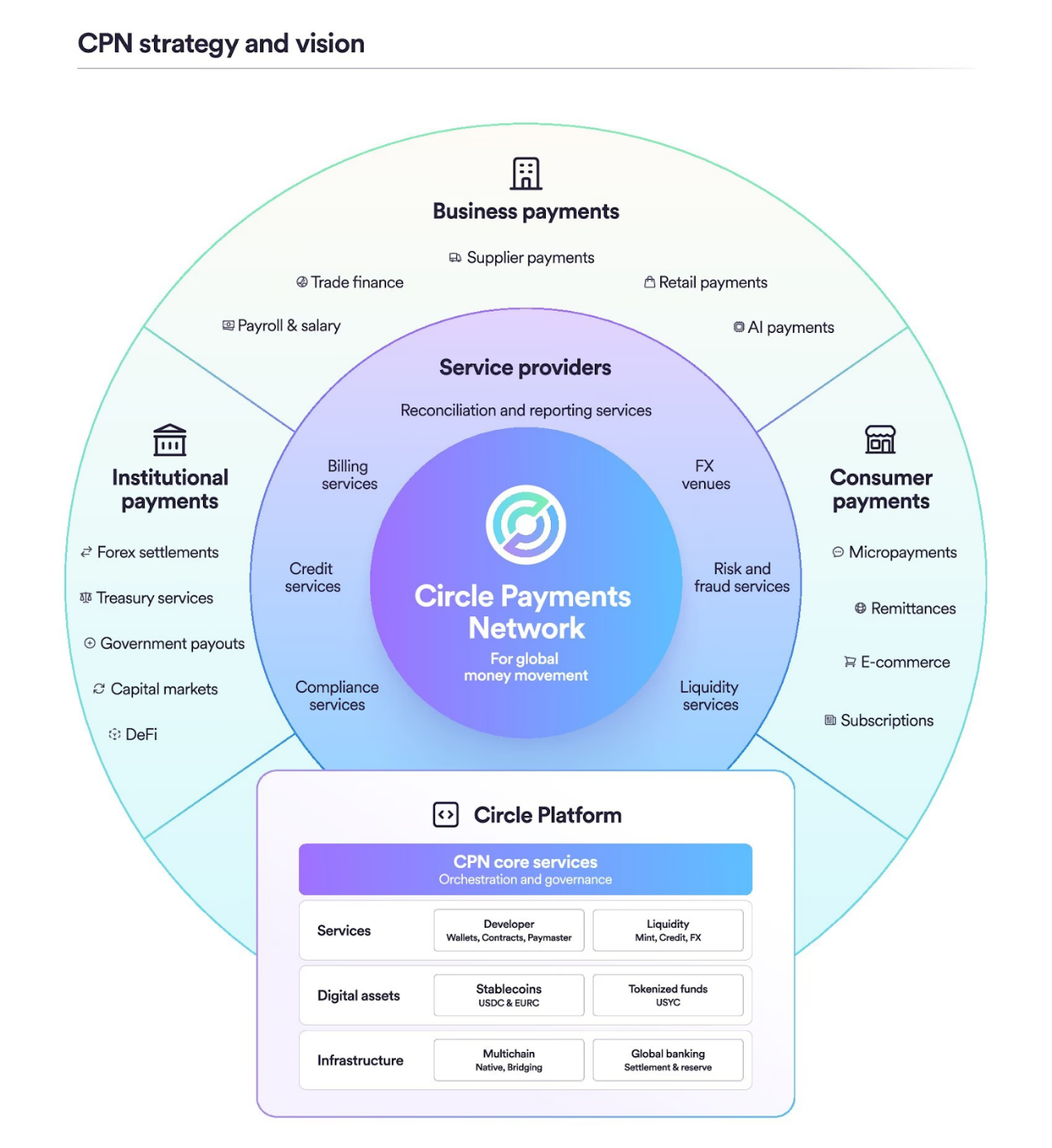Compiled by: Felix, PANews
On April 21, USDC stablecoin issuer Circle announced plans to launch the Circle Payments Network (CPN), a stablecoin-driven cross-border payment network, in May.
CPN aims to facilitate faster and lower-cost international remittances by enabling real-time settlement around the clock among participants such as banks, payment providers, virtual asset service providers, and digital wallets, utilizing stablecoins like USDC and EURC, as well as other regulated digital currencies.
This launch represents a strategic expansion of Circle's role, transitioning from a stablecoin issuer to an infrastructure provider for the large-scale transfer of these assets.
Building Frameworks, Eliminating Barriers
According to the World Bank, the current settlement time for cross-border payments can still exceed one business day, with costs exceeding 6%, impacting emerging markets and limiting global competitiveness.
While stablecoins have long been anticipated to become a new foundation for internet payments and capital flows, there are still many barriers to their adoption in mainstream payments. These barriers include user entry challenges, ambiguous compliance requirements, technical complexities, and concerns over the secure storage of digital cash.
CPN aims to eliminate these barriers. By integrating financial institutions into a compliant, seamless, and programmable framework, it coordinates global payments in fiat currency, USDC, and other payment stablecoins. Corporate and individual clients of these financial institutions can enjoy a payment experience that is faster and cheaper than traditional payment systems. Financial institutions participating in the network must meet strict eligibility standards, including licensing, AML/CFT compliance, financial risk management, and cybersecurity protocols.
Vision and Use Cases

With CPN, Circle is building a brand new platform and network ecosystem that provides a wide range of cross-border capital flow use cases for businesses, financial institutions, and individuals, including vendor payments, remittances, payroll, capital market settlements, internal fund operations, and on-chain financial applications. Among them:
Businesses
Importers, exporters, merchants, and large enterprises can leverage financial institutions supporting CPN to eliminate significant costs and friction, strengthen global supply chains, optimize capital operations, and reduce reliance on costly borrowed working capital.
Individuals
Remitters and recipients, content creators, and others who tend to send or receive small payments will realize more value, as financial institutions using CPN will be able to provide these enhanced services faster, at lower costs, and in a more streamlined manner.
Builders
Banks, payment companies, and other providers can utilize CPN's platform services to develop innovative payment use cases, leveraging the programmability of stablecoins, SDKs, and smart contracts to build ecosystems. Third-party developers and businesses can introduce value-added services to further expand network capabilities.
Additionally, CPN is supported by smart contract infrastructure and modular APIs, enabling third-party developers to build advanced modules, application services, and automated financial workflows directly on CPN.
Meanwhile, to ensure that the construction of CPN meets high standards of trust and operational integrity, Santander Bank, Deutsche Bank, Société Générale, and Standard Chartered Bank are serving as advisors, providing consultation for the network's design.
CPN already has over 20 design partners, including Alfred Pay, BCB Group, BVNK, CoinMENA, etc. This indicates that the platform will focus on institutions operating in emerging markets and large remittance channels.
Targeting Payment Giants
As stablecoins become increasingly popular globally, regulatory frameworks are also beginning to converge, and Circle sees an opportunity to modernize global currency circulation.
Circle's new platform aims to compete directly with established payment platforms like Visa and Mastercard. Despite Circle's growing influence and regulatory strength, USDC's market share still lags behind its competitor Tether (USDT).
As of the second quarter of 2025, USDC's market capitalization is $60.17 billion, while USDT's market capitalization is $144.05 billion. Nevertheless, Circle remains committed to enhancing transparency, compliance, and functionality to close the gap.
It is also worth mentioning that Circle is not the first company to attempt to fundamentally change cross-border payments or replace SWIFT, but so far, no company has succeeded. Whether Circle can break this curse in the future remains to be seen.
Related Reading: Circle IPO Analysis: Growth Potential Behind Low Net Margins
免责声明:本文章仅代表作者个人观点,不代表本平台的立场和观点。本文章仅供信息分享,不构成对任何人的任何投资建议。用户与作者之间的任何争议,与本平台无关。如网页中刊载的文章或图片涉及侵权,请提供相关的权利证明和身份证明发送邮件到support@aicoin.com,本平台相关工作人员将会进行核查。




